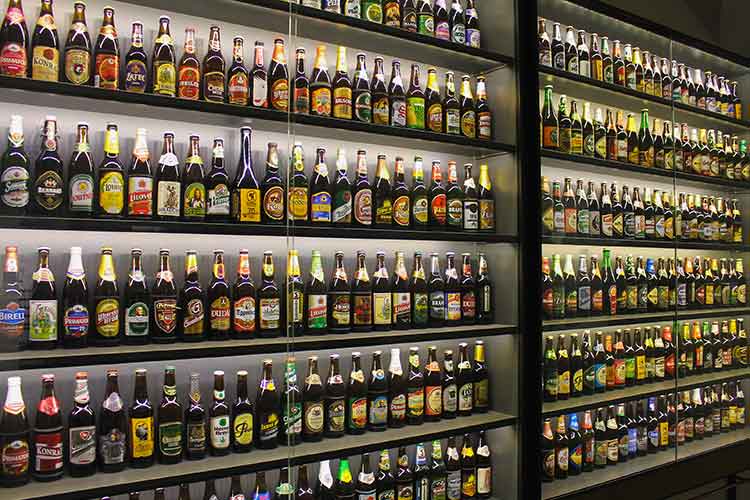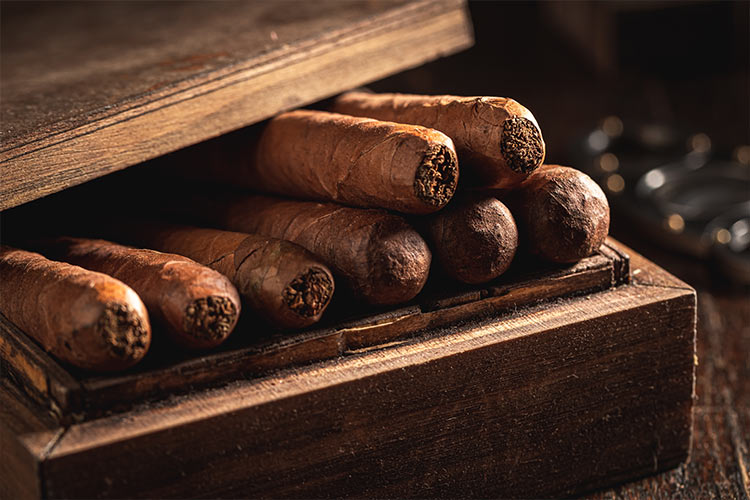Wine lovers tend to be passionate, worldly people and get into many different epicurean interests: Food and drink, music, travel, the arts, and more.
Whether you’re already the owner of a wine cellar and just wondering, “what else can I put in here,” or maybe you just purchased a home with one but aren’t quite ready to venture into collecting, a cellar or room can be a practical, multi-purpose space that you can use to cultivate many passions.
A Caveat: With an average climate of 55°F and 60% humidity, a wine storage space is different than a standard refrigerator. It’s both warmer, and more humid: so you probably don’t want to hang a piece of priceless art on the wall or keep your favorite books here.
Here are a few practical ideas for using your cellar to its full potential.
A Wine Cellar is the Perfect Place to Store… Beer?

Beer bottles, cans, growlers, and kegs too: All are hermetically sealed and impervious to the humidity of a wine cellar. If you enjoy esoteric beers from around the world and want to display your menagerie, this is the place to do it! Some styles of craft beer are best served at warmer temperatures, so a wine cellar is actually better for your Belgian ales, Sours, and Scottish ales, anyway.
The Best Way to Keep Your Olive Oil
Grapevines and olive trees love similar climates and it’s not uncommon for vineyards (especially in the Mediterranean and California) to produce their own olive oil. If you’ve returned from your travels with a few bottles or cans of high-end olive oil they can go in your cellar. As with wine, light, heat, and oxygen are the enemies of olive oil, so a dim, cool wine cellar is the perfect place to keep it long-term. Nothing adds flair and depth to a wine room quite like displaying products that were produced side-by-side with the wines in your collection!
Storing Cheeses and Cured Meats
Unfortunately, most gourmet cheeses require very high humidity (around 95%) for long-term aging, so a wine cellar won’t cut it. While you can hold cheeses there for a short while, keep in mind they’ll probably leave your cellar smelling a bit funky.
Fortunately, you can store certain types of cured meats, sausages, and salamis in a wine cellar. Cured meats can last up to a year or more if uncut/unopened and up to two months after opening when kept in a dark, cool place. Here’s a quick reference chart of what’s safe to hold in this environment.
A Wine Cellar Can Double as a Cigar Humidor

Cigar aficionados will tell you that an environment of 70% humidity is ideal for a humidor, but according to the experts at JR Cigar, 60% will work as long as it’s consistent. It’s not uncommon for stogie lovers to bump their cellar’s humidity level up to keep their cigars. And if your cellar has multiple climate zones, even better. You may want to test this out with a box or two before fully committing.
The Home Entertainer’s Dilemma: Where to Put all of the Food?
If you host events at home you know the pain all too well: Whether hiring a caterer or doing the prep yourself, there’s never enough room in the fridge to put all the food before the event. Although a wine cellar is not the same temperature as a standard refrigerator (most kitchen refrigerators are around 43°F), it does offer a cool, stable environment that doubles as an acceptable short-term holding area for semi-perishable foods, catering platters, and produce.
Use Your Imagination
A wine cellar doesn’t have to be one-dimensional. When you think about the amount of time, effort, and money it takes to build something of this magnitude, it deserves to be more than just functional. Let your passion for life come through by making it a space that showcases your diverse interests.
If you’re starting from scratch and want to explore all of the possibilities for your new wine cellar or room, choosing the right contractor is key. Our preferred builders and distributors can guide you in the right direction.

